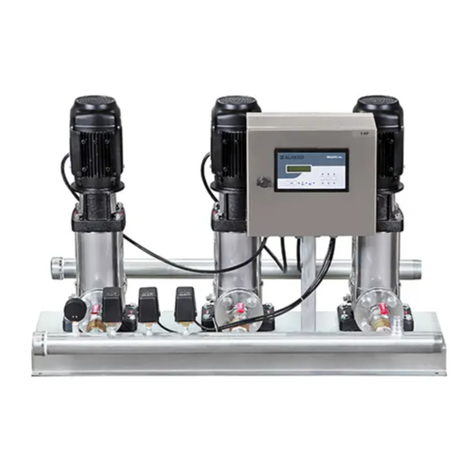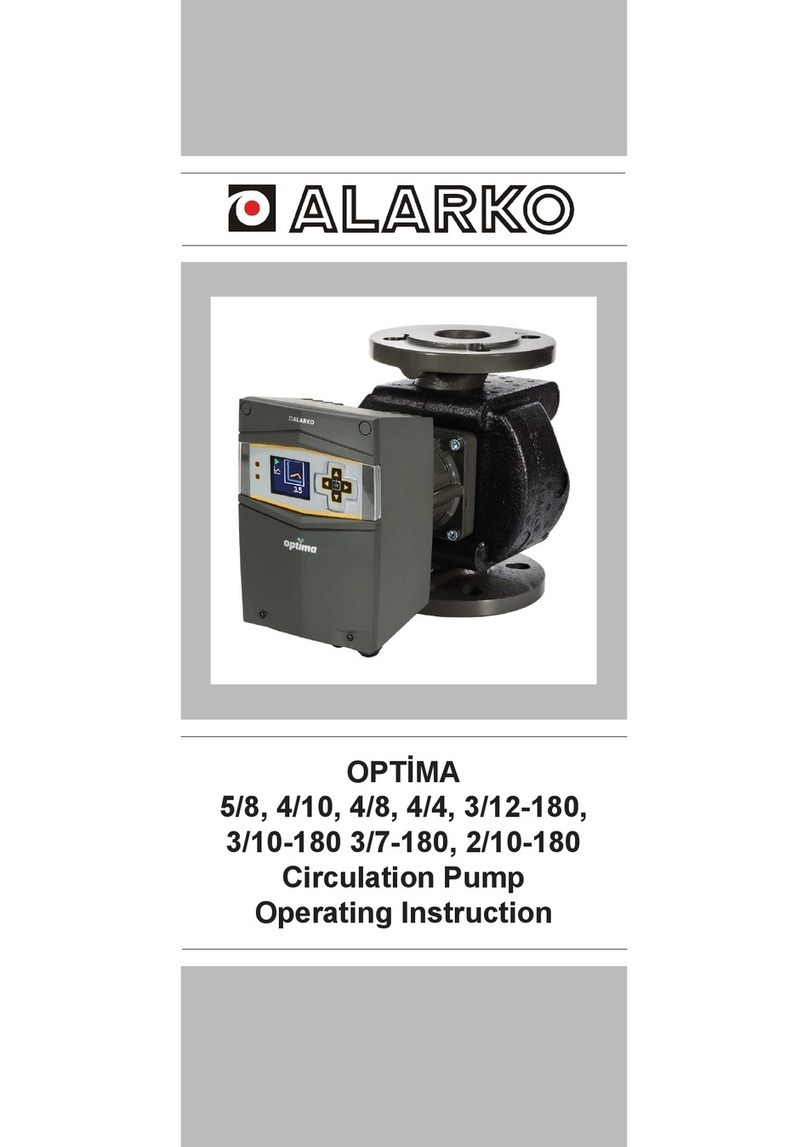
7
WARRANTY and SERVICE
This manual applies to all types of ALD and ALDF series water boosters.
Alarko Boosters are under guarantee of ALARKO CARRIER for 2 (two) years
against material and manufacturing defects provided that the principles,
warnings and standards specified in these operating manual are followed.
The warranty conditions are explained on the Warranty Certificate supplied with
the water booster in accordance with the provisions of the relevant law. Please
review this information carefully.
The Product Warranty Certificate will be filled and stamped by the authorized dealer of
ALARKO CARRIER where you purchased the water booster, and signed by you.
Then one copy will be given to you and the other copy will be sent to ALARKO
CARRIER Customer Service Department. You must maintain and keep your Warranty
Certificate handy in order to show it to the authorized service personnel to carry out
the warranty procedures during the service operations.
You can find the addresses of ALARKO CARRIER Authorized Services, where have
trained and authorized people to commission, maintain and repair your water booster,
on the website at “www.alarko-carrier.com.tr”.
If you encounter any problems, you can call the Customer Hotline at 444 0128 with
domestic tariff across all cities of Turkey, or you can reach Alarko Carrier Customer
The warranty procedures are only valid for the operations of ALARKO CARRIER
authorized services. The warranty does not cover failures that may result from non-
standard, improper installation and repairs, irregularities in the power supply. The
manufacturer and dealer companies are not responsible for the intervention of the
product by unauthorized persons. For this reason, please contact your ALARKO
CARRIER authorized service in case of any problem with your product. Our
authorized services are always at your service.
Alarko Water Boosters have superior technology and high quality materials that can
serve you for many years without any problems. The minimum service life specified by
the Ministry of Industry and Trade for water boosters is 10 (ten) years. Pursuant to the
relevant law, manufacturers and dealers undertake to service the water booster and to
provide spare parts within this period.
Tariffs and spare parts prices of ALARKO CARRIER Authorized Services are listed
separately. You can review the lists during service operations. In the event of a
problem, you can contact the ALARKO CARRIER Customer Service Department from
the address and telephone number given on the back cover of this manual.






























